Do you need help motivating reluctant learners to work independently?
Motivating reluctant learners to work independently is challenging. Working independently is a learned skill. Students need to learn independent work habits to be successful in upper elementary and beyond. Student work habits include planning, managing time, organization, and finding answers to questions when you get stuck. Because work habits are not often explicitly taught, many students miss out on this valuable skill until later in school and some never learn it. The result is what appears to be a reluctant learner, but is most likely a student who just hasn’t learned how to work independently.
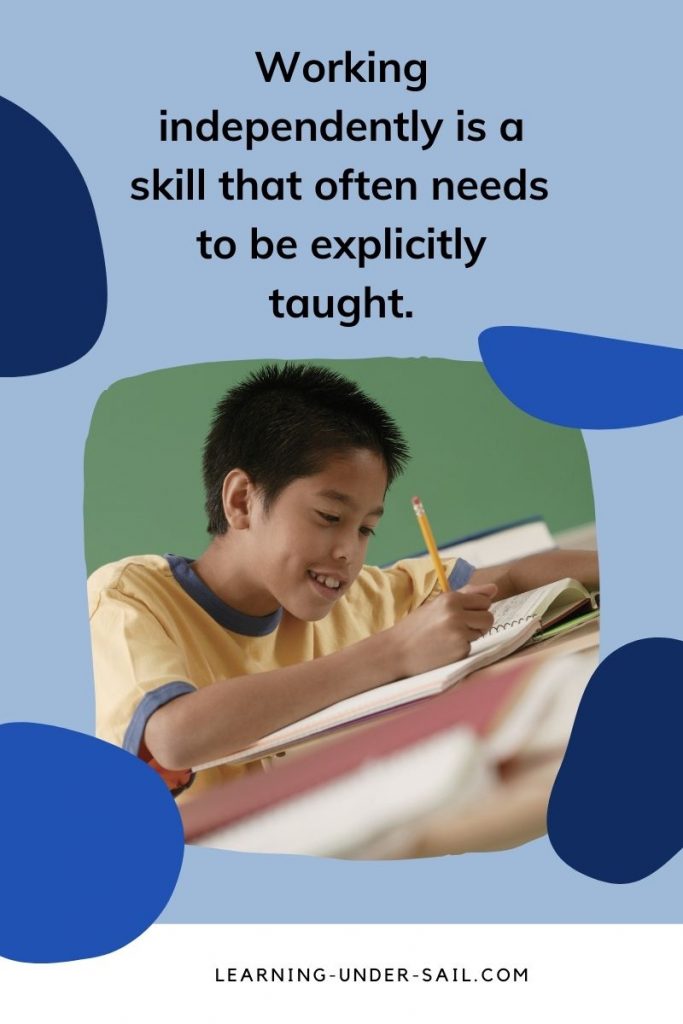
Here are some strategies to help your upper elementary students become more independent in the classroom and some tips for motivating reluctant learners in your classroom.
Before we get into how to motivate a reluctant learner to work independently, here are a few different types who might pop up in your classroom. Does anyone sound familiar? 😉
The Pot Stirrer
This is the kid who thrives on interaction with other students. It doesn’t matter if the interaction is positive or negative, but who are we kidding? It’s way more fun to annoy someone than to just go quietly have a chat. This student needs firm rules and logical consequences.
The Daydreamer
You may find this student when you have to ask him what he did all week when he turns in blank papers. He wasn’t causing any trouble, so you assumed that he was quietly plugging along working independently. Oops. This student needs some help getting started each day and some consistent follow-up to hold him accountable for using his time wisely.
The Perfectionist
The perfectionist can easily be confused with the daydreamer. The difference is that the daydreamer needs to develop consistent work habits, the perfectionist avoids the work because he’s afraid to make a mistake.
How can you avoid making a mistake? Just don’t do the work. No work. No chance to make a mistake. No risk. No problem. Right? This student needs lots of positive reinforcement for attempting to do the work independently. If possible, don’t grade the first assignments for correctness, just completeness until you build some trust and the student starts to get comfortable making mistakes.
The Figiter
The figiter’s classroom hobbies include:
- Sharpening a pencil until it is about one millimeter long and playing with the pencil shavings.
- Tearing or cutting paper into tiny bits.
- Spreading out liquid glue in a thin layer so it can be peeled.
The figiter would much rather participate in these hobbies than do his independent work. Your best move is to take away as many distractions as possible and figure out a regular check-in system to support this student during independent work time.
Now that we’ve gotten to know some of them, let’s talk about motivating reluctant learners and how we can help them develop good work habits.
Use a timer
This is the classic work for x minutes, then get a reward. Involve the student in deciding how long he will work and then what he’d like to do when the time is up. Think of reward as a type of break.
Here is an example of what using a timer might look like. Suzie works independently on her writing for 10 minutes. When the timer rings, she can look at her comic book for five minutes. Then she can work for 10 more minutes. When the timer rings this time, she takes a five-minute walk in the hallway.
The goal is to increase the student’s work time and decrease the reward and break time.
Break the work down into chunks
Overwhelm is real. Help students break their assignments into chunks. If possible, give them physically less to look at. You might be able to cut a paper in half and only give the student half of the paper. You can also try to use a large index card and some painter’s tape to cover part of an assignment or page in a book.
Planning also falls into this category. You could help the student create a plan for what to do first, estimate the amount of time it should take to complete it, and then plan the next steps. This skill will help students throughout their academic careers.
Help students find success
Sometimes we all just need a win. School is difficult for many students and it is important to feel successful. No one wants to get up and go some place to struggle the day away.
Give struggling students something to look forward to. What’s the student good at? Can he have a special job at school? Can he help a friend? Teach the class about a hobby or interest?
If you’re having a hard time engaging the student, just do something simple to make him feel special. Sometimes I let a student sit in a special chair. What makes a chair special? You say it’s special. Just make it different from everyone else’s chair. You could also let the student use a special pencil or pen. The idea is to give the student something to look forward to as you are building up his academic confidence.
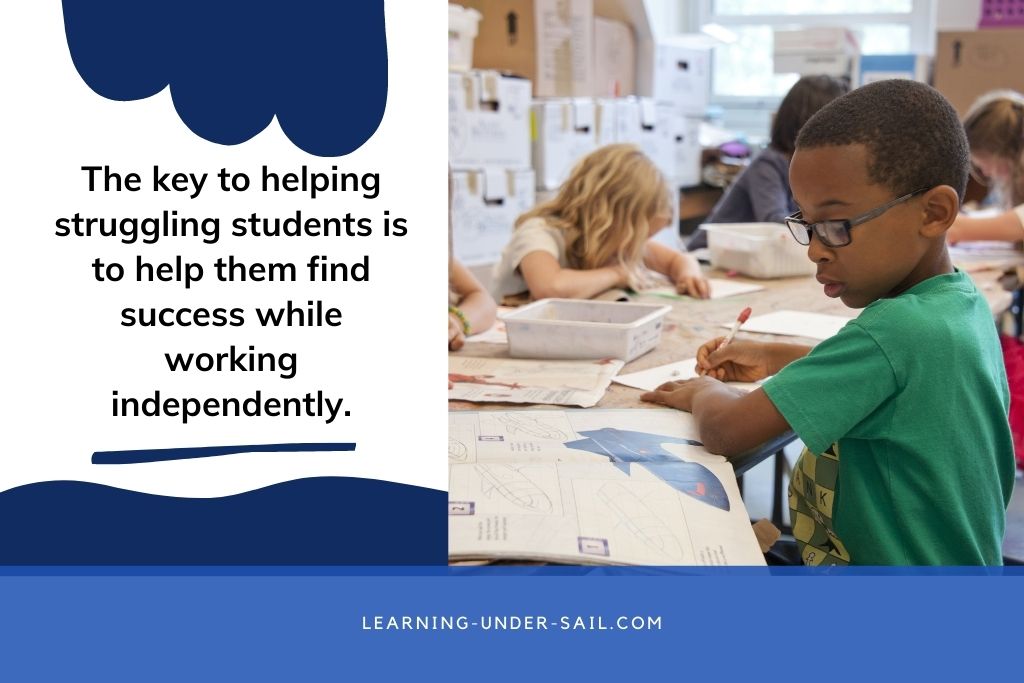
Is the work appropriate for the student?
The work could be too difficult or too easy. This is a tough one because all students need to demonstrate mastery of grade-level skills, but how can you prove mastery (or not) if the student won’t do the work?
If the work is too easy for the student, I implement the, “do what you have to do, so you can do what you want to do” rule. Find something academically appropriate that the student wants to do when he’s finished. I have tried web quests, logic puzzles, or research projects. The key is to give the student some choices and let him follow his interests.
If the work is too difficult for the student to do independently, consider giving less of it. It doesn’t take 10 questions to prove that the student cannot do the work. Have the student attempt 2-3 questions, then move an activity that helps build him up to the skill level where he should be working. Keep in close communication with parents, so they understand that you are working to build their child up to grade-level standards.
Read more about how to modify independent student work in this article, How to Master Literacy Centers With This Powerful Strategy.
One caution when helping students who are working below grade level – don’t do the work for them or pair them with a peer buddy who gives them the answers. This leads to inconsistent data and it is difficult to measure the student’s progress.
Make them an expert
Some of our students who struggle academically have fabulous “soft skills” or are computer wizards. Make your struggling student a computer expert. This person’s job is to help anyone who was having trouble with their computer and introduce all of the computer programs to new students. I have also had a classroom greeter. This student greets anyone who comes to the door. The greeter is also in charge of answering the classroom phone.
Peer buddy
Peer buddies are great for helping with organization and time management. In this case, your struggling student might need a peer buddy or could be a peer buddy for another student.
If your student is struggling academically but has great organizational skills, pair him up with a disorganized student. The idea goes back to helping students find success and meaning in the classroom.
Another time that a peer buddy is helpful is when the struggling student needs some help getting started. A peer buddy can help the other student find papers and offer a few encouraging words to get the other student started on his work. It is important to train the peer buddy about the expectations of the peer buddy job before turning the pair loose to work.
Give choices
When students have a choice they are more likely to take ownership and complete a task. Keep the choices simple. For example, would you like to use a red pencil or green pencil? If a student is taking a break before getting started, do you need one minute or two minutes to rest? For morning work, would you rather start the day with your math review or journals? If students are responsible for completing a project, give them two presentation choices. The possibilities are endless. Giving students choices will create student buy-in and give them some control in the classroom.
Ask students what they need
I added this idea last, but this is a good place to start. Simply ask a student why he’s not doing his work. If he doesn’t have an answer, explain that you want to help and give a few suggestions from above. Let the student choose a strategy to help him get his work done.
Letting a student choose how he will get his work done is great for accountability. If the student isn’t doing what he’s supposed to do, you can gently remind him that he said this strategy would help him get his work done, so he needs to do his part and get to work.
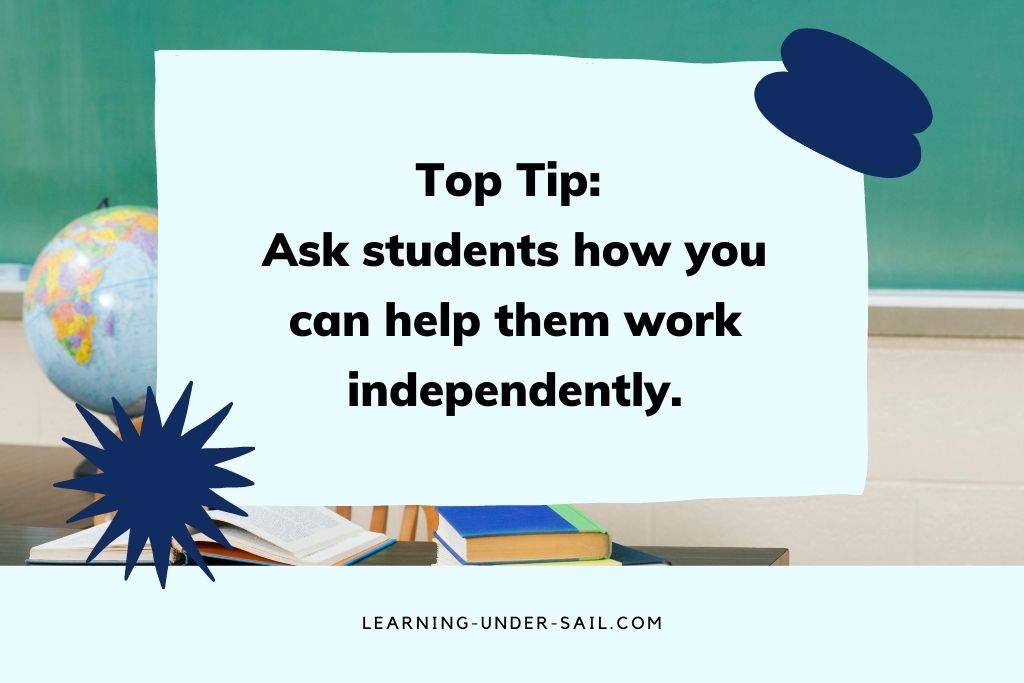
If you are working on motivating reluctant learners in your classroom this year, try one of the ideas above and watch your students make progress.
For more ideas about motivating reluctant learners, check out these articles:
5 Ways to Engage Reluctant Learners
How to Connect with Reluctant Students During Remote Learning
6 Awesome Ways to Engage Reluctant Learners
What’s your biggest intervention challenge? I’d love to hear from you! Tell me in the comments below.



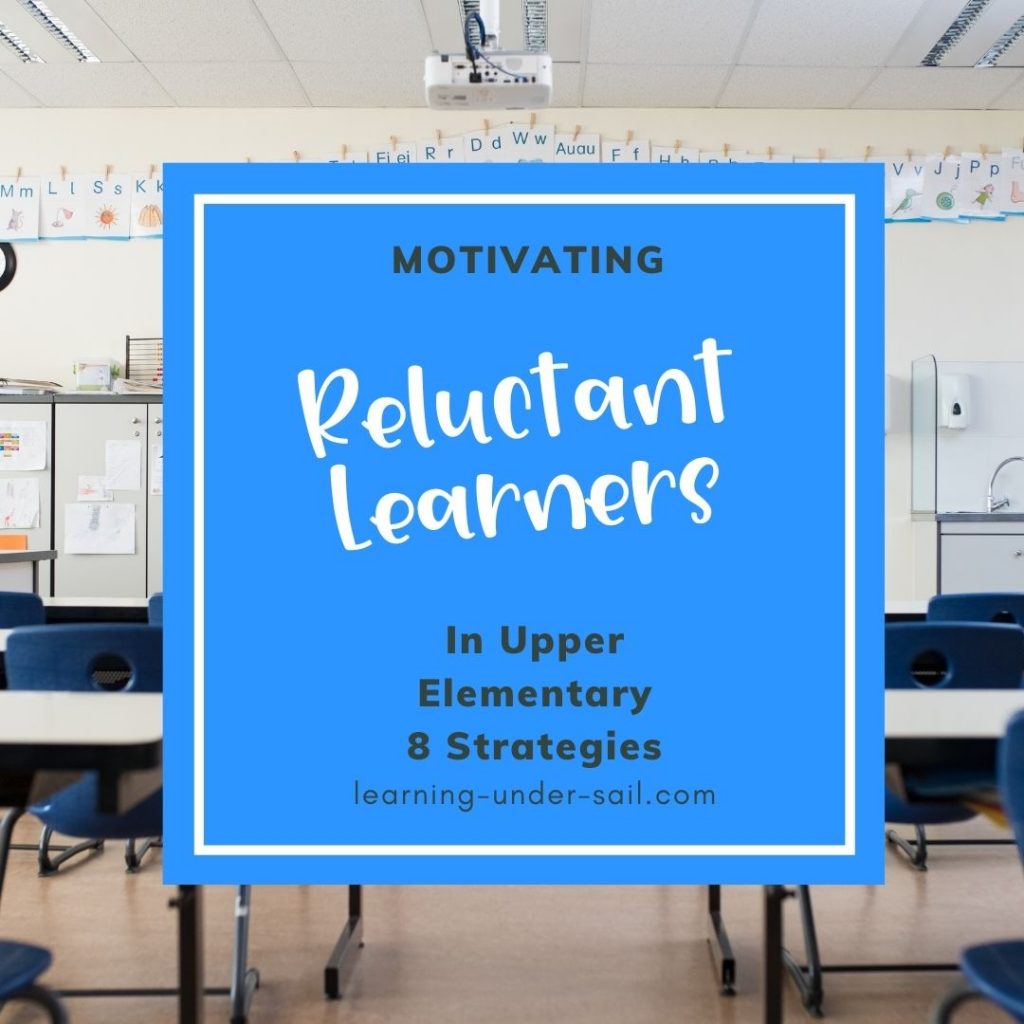




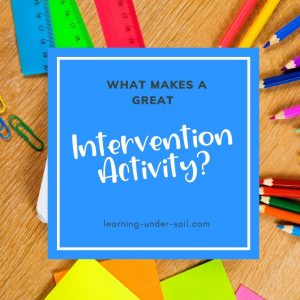


One Response